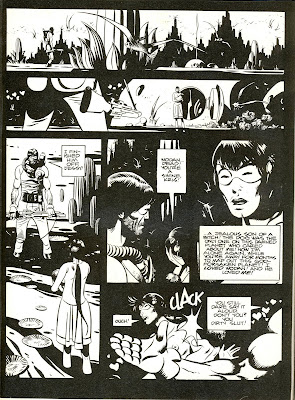2 / 5 Stars
‘The New Tomorrows’ (Belmont Tower, 1971, 235 pp., cover artist uncredited) is compiled by editor Norman Spinrad to showcase the New Wave Movement, at the time when the Movement was much in vogue. Many of the stories in this anthology first appeared in the late 60s and early 70s in the very influential UK sci-fi magazine New Worlds.
The anthology opens with a Introduction by Spinrad; this is an engaging overview of SF publishing at the time of the early 1970s, with Spinrad mildly rebuking ‘mainstream’ magazines and books for refusing to release works by Movement authors. There is a cogent discussion of the phrase ‘speculative fiction’ and the rationale taken by some authors for adopting the term in order to further their careers. The statistics Spinrad provides on hardback and paperback sales figures and magazine circulations are an interesting snapshot of where the genre stood in the marketplace at the time of the book’s release.
As is to be expected with New Wave content, the majority of the stories focus on mood, setting, and character rather than plot or narrative; many are devoid of traditional SF topics, and some are so ‘experimental’ as to represent self-indulgence on the part of the author. Some capsule descriptions:
‘The Pleasure Garden of Felipe Sagittarius’ by Michael Moorcock: detective Milos Aquilinus arrives in an absurdist Berlin to investigate a murder; he interacts with various historical personages.
‘Driftglass’ by Samuel R. Delaney: a genetically engineered merman, crippled by an accident at a deep-sea construction project, advises a younger counterpart. This is one of Delaney’s more accessible stories.
‘Sending the Very Best’ by Edward Bryant: an incomprehensible, patently New Wave short-short. It features greeting cards.
‘Going Down Smooth’ by Robert Silverberg: underwhelming tale of a computer that develops a cranky sort of AI.
‘The Garden of Delights’ by Langdon Jones: gripped by anomie, a young British man returns to the abandoned house where he grew up. He experiences an X-rated version of ‘Somewhere in Time’ involving…. incest (!) At the time of its publication I’m sure this story was considered Explicit, Provocative and Daring, but with the passage of time it comes across as little more than skeezy porn….and Jones as a very creepy personality….
‘Surface If You Can’ by Terry Champagne: satirical tale of a couple of grad students who rent a bomb shelter from an absent-minded heiress. There is a surprise ending that makes this the best story in the anthology.
‘Masks’ by Damon Knight: a man horribly injured in an accident survives via transformation into a cyborg, only through the cost of predictable angst and spiritual anomie.
‘Pennies, Off A Dead Man’s Eyes’ by Harlan Ellison: a mutant investigates a woman who steals from the dead.
‘Flight Useless, Inexorable the Pursuit’ by Thomas Disch: in the near future, a man flees high-tech pursuit. An undeveloped fragment rather than a genuine short story.
There are three entries that display the artiest of New Wave prose forms, the ‘experimental fiction’ piece in which the conventional narrative structure is replaced by a loosely connected series of non sequiturs, leaving it to the reader to attempt to synthesize a coherent plot. About all that can be said of ‘198-, A Tale of ‘Tomorrow’ by John Sladek, ‘The Last Hurrah of the Golden Horde’ by editor Spinrad, and ‘Down the Up Escalation’ by Aldiss, is that Spinrad’s story is the easiest to follow. But that’s not saying much.
A story by one Michael Butterworth has such a long title that I’m not going to repeat it here. Butterworth’s tale features short stretches of text mingled with hand-drawn geometric diagrams (below); who am I to say this is not Art ?
‘The Jungle Rot Kid On the Nod’ by Philip Jose Farmer: William Burroughs does Tarzan. The sort of facile, opportunistic literary trickery that earned Farmer much praise in the early late 60s and early 70s.
The verdict ? There are three or four stories that may please hard-core New Wave fans. But all others can probably pass on ‘Tomorrows’.
































































